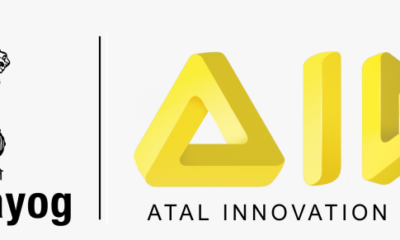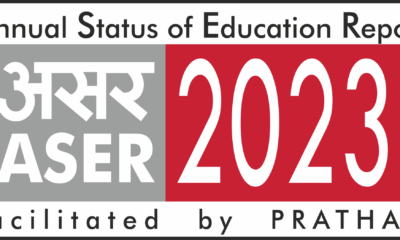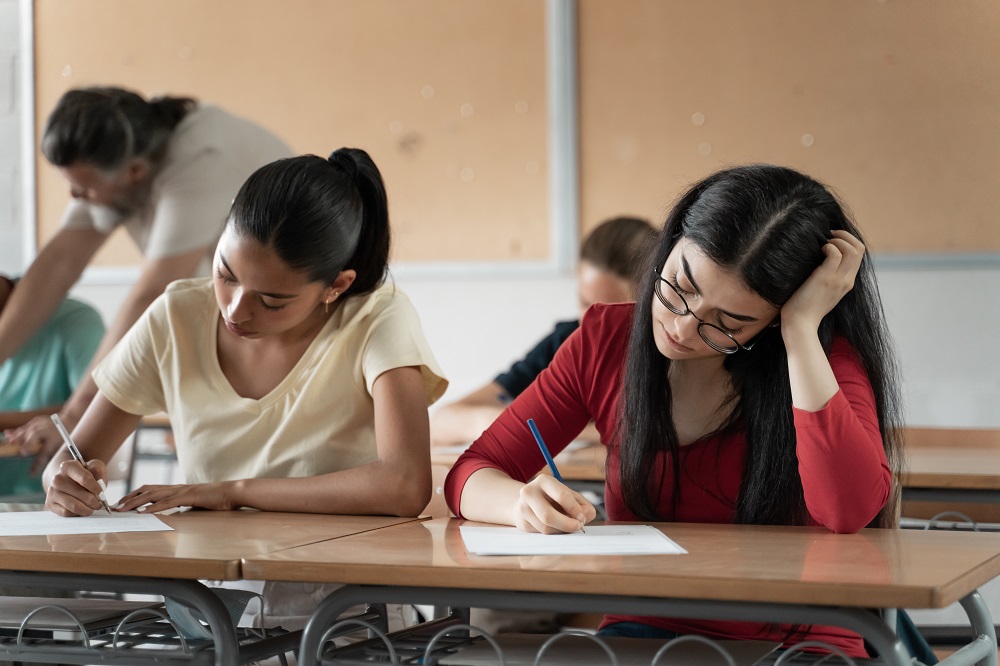Knowledge
What the National Policy on Education should ideally incorporate?
The HRD ministry is well aware of the gaps in learning outcomes of students. With this NEP the ministry has an option of setting things right and bringing in tough but needed systemic changes in the education policy.
Published
8 years agoon

There was a time when successive governments of India would set aside time and efforts to set out 5 year developmental models for the economy. This has however been replaced today by Niti Aayog. So when there was such an importance placed on the overall development of the economy and the associated sectors why wasn’t there such seriousness for the education sector? After all a robust and well functioning education sector will feed the industry with well trained and capable manpower?
So it comes as a massive surprise that the previous National Policy on Education was formulated in 1986 and only now is the government readying the latest NEP. Speaking at the National Stocktaking Convention on the Right to Education (RTE) Act recently, vice-president Hamid Ansari quoted the findings of the Annual Status of Education Report (ASER, 2014) that about 50% Class V children in rural India were unable to read a simple paragraph or do basic math. He also shared a crucial observation that while enrolment in elementary education has increased in terms of absolute numbers, education outcomes have declined among children aged 6 to 14 years.
It is a good sign that the HRD ministry is well aware of chronically low learning levels and has cited it in the New Education Policy (NEP). So what does the NEP need to do to ensure that children learn basic language and numerical skills? Can technology be leveraged to provide better school education? What level of teacher performance assessments are needed bring in more accountability?
While none of these questions are new, what’s novel is that the HRD ministry has for the first time turned to extensive grassroots consultations for solutions. In fact, randomized impact evaluations conducted by researchers affiliated with Massachusetts Institute of Technology’s Abdul Latif Jameel Poverty Action Lab (J-PAL) has thrown up insights on what works and what doesn’t in improving the learning outcomes of children, which can help build a evidence-backed NEP. The research clearly sets out 3 areas of improvement.
Pedagogical solutions
It is proven that pedagogical interventions aimed at the learning level of the child have yielded unexpectedly good results. Universally, every classroom across the world has a wide variation in learning levels among students. 15 years of randomized impact evaluations carried out in India, Ghana and Kenya has shown that populating classes based on learning levels, in place of the current practice of grouping according to age or grade, can help children gain basic maths and reading skills quickly.
In fact, Indian NGO Pratham has been doing path-breaking research on this topic. It’s Read India programme based on teaching-at-the-right-level approach have shown positive impacts on learning. A recent evaluation of this programme implemented in a government school classroom in rural Haryana showed that, schoolteachers, with monitoring and mentoring support from block officials and Pratham staff, reflected improvements in basic Hindi skills. This has provided with an evidence-backed scalable model for raising the bar of basic literacy and arithmetic skills that can be implemented by government schoolteachers in a government school context.
Technological Solutions
While forming classes on the basis of learning levels and competencies may pose some logistical challenges. Technology has the inherent flexibility to adapt to the level of understanding of the child to teach basic competencies in reading and arithmetic even when attending the same classroom. An experiment conducted in Gujarat where children were allowed to play self-paced math games showed exponential improvements in their math scores. However, in another part of the world, a ‘One Laptop One Child’ in Peru showed that technology alone cannot guarantee learning.
School governance
In addition to pedagogy and introduction of technology, school governance factors also contribute to improving learning levels. Studies conducted by J-PAL affiliated researchers show that when teacher are incentivized on basis of their presence and effort, and establishing a well designed monitoring and accountability structures, can lead to improvements in learning in certain contexts.
In fact this has already been proven in primary schools run by the NGO Seva Mandir in rural Udaipur. When teacher’s attendance was monitored and their salaries linked to their attendance it was found that it improved student test scores. Government schools in rural Andhra Pradesh that linked their teachers’ pay with the students test scores also led to test score gains.
However, an incentive structure tied to student learning outcomes, may be detrimental for the students in the long run as the teachers may “teach to the test”, and as witnessed in Kenya may raise test scores in the short-term.
Acknowledging the importance of community participation, India’s RTE Act mandates the formation of school management committees, but the effectiveness of community monitoring is mixed. A study in rural UP saw that when Village Education Committees simply reported about the quality of government schools in their village it did not improve education outcomes. However, this approach may yield better results if the school management committees were empowered to oversee recruitment of teachers as well as monitor them on learning outcomes children.
Overall, the research concludes that well-thought out reforms in pedagogy and school governance structures are critical to address India’s learning predicament. Going ahead, as new solutions emerge, it will be important to continually evaluate and validate, lessons learnt from them before incorporating them in the national policies.

You may like
-


Jharkhand Introduces Innovative Schemes to Support Higher Education Aspirants
-


Ministry of Women and Child Development Unveils National Curriculum Framework for Early Childhood Care and Education
-


Shri Dharmendra Pradhan launches various initiatives in School and Teacher Education
-


Frontier Technology Labs to Revolutionise School Learning in India, Thanks to AIM, NITI Aayog, and Meta Collaboration
-


National Science Day: Achieving the Dream of Viksit Bharat Through Education
-


Education or Profit? Bombay High Court Calls for Accessible Learning for All
-


Dharmendra Pradhan launches Vidyanjali Scholarship Programme
-


Empowering the Future: The Success of Beti Bachao Beti Padhao in Girls’ Education
-


ASER 2023 Report Unveils Key Insights into India’s Youth Education and Digital Literacy
-


Can Hindi Become the Next Global Language?
Education
Ivy Pressure Unveiled- The Need to Look Beyond the Ivy Gates
Published
14 hours agoon
April 24, 2024
In the heart of Prestise Valley School, nestled in a bustling city that prided itself on academic excellence, the story of Shanaya unfolded—a narrative steeped in ambition, aspiration, and the unspoken realities of chasing Ivy League dreams.
Shanaya , with her keen mind and boundless ambition, had always been the emblem of Prestise Valley’s pursuit of academic supremacy. Encouraged by a system that equated success with admission to the world’s most esteemed universities, she became the embodiment of her school’s aspirations. The corridors buzzed with talks of her future, painting her as the next prodigy destined for Ivy League glory.
As the acceptance letter from an illustrious Ivy League college arrived, it was not just a personal victory for Shanaya but a badge of honour for Prestise Valley. Yet, beneath the veneer of celebration, lay an overlooked truth—while Shanaya was prepared to compete for her place among the elites, she was unprepared for the reality that awaited her beyond the hallowed halls of her dream college.
Embarking on her journey with pride and anticipation, Shanaya soon encountered the stark disparity between being academically eligible and being holistically prepared. Surrounded by peers who were not only academically gifted but also equipped with a wealth of practical skills and worldly insights, she felt increasingly out of her depth. The rigorous curriculum, coupled with the expectations to excel in extracurricular arenas, highlighted the gaps in her preparation. Skills that should have been nurtured alongside academic pursuits—critical thinking, adaptability, and emotional resilience—were conspicuously absent.
The realisation dawned upon Shanaya that the race to the Ivy gates had overlooked the essence of true education. Her school’s relentless focus on prestigious admissions had neglected the foundational aspects that would enable her to thrive in such a competitive environment. With a heavy heart, Shanaya made the difficult decision to return home, facing not just the personal disappointment of unfulfilled potential but also the weight of collective expectations.
Her return was met with a silence that spoke volumes, a stark contrast to the fanfare that had heralded her departure. In the quietude of introspection, Shanaya pondered the lessons learned—not from textbooks, but from life. She resolved to chart a new path, one that balanced academic aspirations with the development of a versatile skill set and a resilient spirit.
Shanaya ‘s story, a mirror to countless young minds navigating the pressures of Ivy League aspirations, serves as a poignant reminder of the need for a holistic approach to education. It challenges the prevailing narrative, urging a shift from the singular goal of elite college admissions to fostering well-rounded individuals capable of navigating the complexities of the global stage.
As we explore the stories behind #IvyPressureUnveiled, how might we reconsider the essence of education—not merely as a race to the pinnacle but as a pathway of growth, discovery, and genuine readiness for life beyond the Ivy gates?
To read more on such trends that need to be called out and #un-trended, head to the April issue of our magazine here.
Education
Unsupervised Explorations: Rethinking Student Trips
Published
2 days agoon
April 23, 2024
In a tale of youthful exuberance and unforeseen peril, six students from Class 12 embarked on a journey to Goa, a rite of passage celebrated by many as a final hurrah before stepping into adulthood. With permission from their parents, who were perhaps too trusting or caught up in their own lives, the group set out with excitement pulsing through their veins. Upon landing, they were greeted not just by the balmy Goan air but by three massive SUVs, reserved for their adventure—a promise of freedom and the thrill of the open road.
Their accommodation was a sprawling villa, costing a small fortune at 70,000 INR per night, equipped with private pools and luxuriously appointed rooms. It was a palace for kings and queens of the night, a haven for six souls intertwined in the throes of adolescence. Three rooms for three couples, the arrangements were a testament to their intentions, seeking privacy and moments of unchecked passion under the guise of a holiday.
As the days unfolded, the allure of Goa’s vibrant nightlife beckoned. The students, drawn to the magnetic pull of music and dance, found themselves in the heart of the party scene, clubbing into the early hours. It was here, amidst the revelry, that they encountered individuals with sinister motives—drug peddlers who saw not just customers but vulnerable targets in these wide-eyed teenagers.
Swept up in a desire to appear worldly and sophisticated, the group made a decision that would pivot their holiday from a dream to a nightmare. They purchased drugs, a choice made without foresight or understanding of the consequences. Their naivety became their downfall when the police, vigilant and unyielding, caught them in possession of these illegal substances.
The aftermath was swift and severe. The teenagers, underage and unprepared for the legal ramifications, were thrust into the cold reality of juvenile custody. Their parents, irrespective of their affluence, were faced with a situation no amount of money could easily resolve. Frantic and fearful, they did everything within their power to secure their children’s release, confronted with the harsh truth of their offspring’s actions.
This story, inspired by real events, serves as a stark reminder of the dangers lurking behind the facade of freedom and the allure of adulthood. It raises pressing questions about the role of guardianship and parental oversight in the lives of teenagers standing on the precipice of adulthood.
Could this grave misstep have been avoided had there been a local guardian present, a guiding light in unfamiliar territory? Would a more vigilant approach from the parents, a pause to question and understand, have rewritten the story’s conclusion? This incident forces us to confront the reality of our responsibilities towards our youth—not just to grant them freedom but to equip them with the wisdom to navigate it. As we ponder the delicate balance between trust and caution, we must ask ourselves: At what cost does freedom come, and are we doing enough to ensure that the journey into independence does not lead to a fall from grace?
To read more on such trends that need to be called out and #un-trended, head to the April issue of our magazine here.
Education
Mapping Green Careers: Guiding Students Towards Sustainable Job Opportunities
Published
2 days agoon
April 22, 2024
In the wake of escalating environmental concerns and the global push towards sustainability, the demand for green careers is surging. This World Health Day, celebrated on 22 April, 2024, let us understand these careers that not only aim to protect and preserve our planet but also offer promising economic prospects. Indian educational institutions, recognising the burgeoning sector of environmental jobs, are increasingly gearing their curricula and guidance services to help students navigate this new green economy.
Understanding Green Careers
Green careers encompass a broad spectrum of industries and sectors that aim to reduce environmental impact and promote sustainability. From renewable energy and sustainable agriculture to environmental policy and green architecture, the opportunities are vast and varied. These careers are crucial in addressing the challenges posed by climate change, resource depletion, and ecological degradation.
The Role of Schools in Promoting Green Careers
Schools play a pivotal role in shaping the career choices of students. By integrating environmental education and sustainability into their curricula, schools can expose students to the importance and viability of green careers. This can be achieved through several strategic initiatives:
- Curriculum Integration: Incorporating topics on sustainability, environmental science, and eco-friendly technologies within the STEM subjects can provide students with the foundational knowledge necessary for pursuing careers in these fields.
- Career Counselling: Schools can offer specialised counselling sessions that inform students about various green careers. These sessions can include information on the requisite educational paths, potential job markets, and long-term benefits of working in eco-conscious sectors.
- Industry Partnerships: Collaborations with companies and organisations in the sustainability sector can offer students real-world exposure through internships, workshops, and guest lectures. These experiences are invaluable in helping students make informed decisions about their future careers.
- Project-Based Learning: Encouraging students to undertake projects that solve real environmental issues can spark interest in green careers. These projects not only enhance learning but also instil a sense of responsibility towards the environment.
The Indian Job Market Prospects
In India, the renewable energy sector is a significant employer, with the country aiming to reach a renewable energy capacity of 450 GW by 2030. Careers in solar panel installation, wind energy engineering, and sustainability consultancy are on the rise. Moreover, the government’s emphasis on clean technologies and sustainable urban planning is creating numerous opportunities in green architecture and environmental planning.
Global Job Market Trends
Globally, the green job market is expanding rapidly. In Europe, the European Green Deal aims to make the EU’s economy sustainable by turning climate and environmental challenges into opportunities across all policy areas. This initiative is expected to bolster job creation in renewable energy, energy efficiency, and green transportation sectors.
In the United States, the growth of the electric vehicle (EV) industry is driving demand for jobs ranging from high-tech battery manufacturing to network systems management for EV charging stations. Similarly, the push for green buildings is fuelling a need for professionals skilled in green construction and building information modelling.
Preparing Students for the Future
By promoting green careers, schools are not only guiding students towards economically viable job paths but are also preparing them to be active participants in the stewardship of the planet. This dual focus on economic growth and environmental sustainability is essential for building a resilient global economy that can address the pressing challenges of our times.
To summarise, as the world increasingly pivots towards sustainability, the role of education in preparing the next generation for green careers becomes more crucial. Schools that embrace this shift not only contribute to the global demand for environmental stewards but also ensure that their students are ready for the future job market—a market that values both the economy and the environment.
Education
Pricey Presents, Precocious Pressures: The Cost of Gift-Giving to Children
Published
3 days agoon
April 22, 2024
In the intricate fabric of contemporary society, entwined with the threads of status and materialism, the ritual of gift-giving to young children has morphed into a showcase of wealth and social stature. This tale shines a light on the ripple effect of such extravagance through the eyes of Ayaan’s peers, young souls caught in the whirlwind of competition and comparison.
When Ayaan arrives at school with sneakers worth 80k or brandishes the latest iPhone as casually as a textbook, it’s not just a display of wealth; it becomes a benchmark, setting aflame a cycle of envy and desire among his classmates. The children, innocent in their yearnings, unknowingly step onto a treadmill of materialistic pursuit, urging their parents towards the edge of financial prudence in a bid to not fall behind.
The spectacle reaches its zenith when Ayaan, in a display of unparalleled opulence, gifts iPods as return gifts on his birthday. An act, while grand, sends shockwaves through his circle, planting seeds of expectation and entitlement in young hearts. Parents, caught between nurturing happiness and teaching value, find themselves navigating a treacherous path of societal pressure and fiscal responsibility.
As each child in Ayaan’s orbit feels compelled to mirror his lavish lifestyle, the essence of childhood camaraderie is shadowed by the looming spectre of materialism. Friendships, once untainted by the world’s complexities, now bear the weight of economic disparity. The playground becomes a silent witness to conversations not of games and dreams, but of gadgets and brands, a testament to a culture veering away from the innocence of youth.
The impact extends beyond the tangible, chipping away at the pillars of equality and mutual respect. As peers vie to outdo each other in a race fuelled by parental indulgence, the divide widens not just in their possessions but in their perceptions of self-worth and success. The classroom, a microcosm of society, reflects a disturbing trend of measuring one’s value through the lens of ownership and extravagance.
This narrative, while centred on Ayaan and his affluent displays, casts a spotlight on the broader societal implications of such gift-giving practices. It prompts a critical examination of the values we impart to our children and the world we aspire to create for them. As we navigate this maze of materialism and the stories of Ayaan and his peers unfold, they serve as a mirror to our collective conscience, urging us to reconsider the legacy we wish to leave behind. The question that beckons us to reflect is profound: Are we raising a generation that values possessions over people, status over substance?
To read more on such trends that need to be called out and #un-trended, head to the April issue of our magazine here.
Knowledge
Young Birders’ Workshop Opens Registration for Children Aged 10-13 Years
Published
1 week agoon
April 16, 2024
Early Bird, a not-for-profit initiative by the Nature Conservation Foundation, has announced the launch of an online birdwatching workshop tailored specifically for young enthusiasts aged 10-13 years. As birdwatching gains popularity across India, Early Bird aims to deepen young birders’ understanding of their natural surroundings, beyond merely ticking off bird names from their lists.
Set to commence during the summer holidays, this 4-week intensive programme will explore various themes through online sessions that combine multimedia, guided interactions, and lively discussions. These weekly live sessions will be held on consecutive weekends, each supplemented by an illustrated activity sheet that encourages participants to engage with and observe the green spaces around their homes.
The workshop is designed not only to educate but also to foster a deeper appreciation and awareness among children of the ecosystems they inhabit. “The workshop has changed our lives so much. We have found around 30 bird varieties around our house which we were completely unaware of,” shared Rupinder Kaur, a parent of a participant from previous workshops.

“My son never journaled or made notes. Now, he has started noticing everything when we go out to walk and wants to carry his journal. He has always hated writing but now carries his book and pencil and is ready to make notes. This workshop has made a difference to the way he looks at things. Quite enlightening. Has a lot to ask and share.“ said another participant’s parent.
While the workshop itself is free to attend, there is a nominal fee of Rs. 800 for materials, ensuring that all participants have access to the necessary resources to fully benefit from the experience.




Registrations for the workshop are now open and can be accessed through the link provided here. This initiative aims to be an enlightening experience, allowing young minds to discover and connect with the biodiversity that exists right in their backyards.
Early Bird continues to dedicate itself to bringing children closer to nature through educational content, training educators, and direct outreach, fostering a new generation that values and conserves our natural world.
Education
The Role of Marketing in Education: Navigating the New Educational Landscape
Published
2 weeks agoon
April 10, 2024
In an increasingly competitive and interconnected world, the concept of marketing, once synonymous with businesses and industries, has found its place within the realm of education. As educational institutions vie for attention amidst a cacophony of voices, the need for strategic marketing and public relations (PR) efforts has become paramount. While the moral implications of marketing in education may spark debate, there is a compelling argument for incorporating marketing concepts into the educational curriculum, equipping students, teachers, and parents with the knowledge and skills to make informed decisions in an ever-evolving educational landscape.
Gone are the days when educational institutions relied solely on their academic prowess to attract students. In today’s digital age, where information is abundant and attention spans are fleeting, the ability to cut through the noise and communicate effectively has become a prerequisite for success. From crafting compelling brand narratives to leveraging social media platforms, educational institutions are embracing marketing strategies to enhance their visibility and appeal to prospective students and stakeholders.
However, the incorporation of marketing into the educational sector extends beyond mere promotional efforts. At its core, marketing is about understanding the needs and preferences of your target audience and delivering value accordingly. By teaching marketing concepts to students, educators empower them with critical thinking skills and an understanding of consumer behaviour, enabling them to navigate the complex marketplace of ideas and opportunities.
Moreover, marketing education goes beyond the classroom, extending its reach to teachers and parents alike. Educators, tasked with shaping the minds of future generations, can benefit from an understanding of marketing principles to engage students more effectively and create meaningful learning experiences. Similarly, parents, as key stakeholders in their children’s education, can make more informed decisions about school choice and educational resources by understanding the marketing strategies employed by educational institutions.
Critics may argue that the commodification of education undermines its intrinsic value and fosters a culture of competition at the expense of collaboration. While these concerns are valid, it is essential to recognize that marketing, when approached ethically and responsibly, can serve as a powerful tool for positive change. By promoting transparency, accountability, and accessibility, marketing can help bridge the gap between educational institutions and the communities they serve, fostering a culture of trust and mutual respect.
The integration of marketing concepts into the educational curriculum represents a paradigm shift in how we approach education in the digital age. By equipping students, teachers, and parents with the knowledge and skills to navigate the complexities of the modern educational landscape, we empower them to make informed decisions and drive meaningful change. As we embrace the potential of marketing in education, let us remain mindful of its ethical implications and strive to harness its power for the greater good.
Education
From Overwhelmed to Empowered: Strengthening Educator Skills for Success
Published
2 weeks agoon
April 10, 2024
In the corridors of any classroom, teachers stand as pillars of guidance, tasked not only with imparting knowledge but also with nurturing the holistic development of their students. However, the onerous burden of managing a multitude of responsibilities within resource-constrained environments poses a formidable challenge, underscoring the urgent need for enhanced teacher training programmes.
At the heart of this challenge lies the staggering class sizes prevalent in Indian schools. With classrooms often overflowing with 35 or more students, the task of catering to diverse learning needs while maintaining order can seem insurmountable. Effective classroom management techniques, tailored to accommodate large cohorts, are essential for fostering a conducive learning environment and mitigating stress for both teachers and students.
Moreover, the complexity of the modern educational landscape necessitates a multifaceted approach to teaching. From addressing academic gaps to promoting socio-emotional well-being, educators are expected to wear multiple hats, often without adequate training or support. Enhanced teacher training programmes must equip educators with the pedagogical tools and strategies necessary to navigate this intricate web of responsibilities effectively.
Central to the need for better teacher training is the imperative of managing workload and stress. The relentless demands of completing the curriculum, crafting assessments, and addressing administrative tasks can take a toll on educators’ mental health and overall well-being. By providing teachers with comprehensive training in stress management techniques, time management strategies, and self-care practices, we can empower them to strike a balance between professional duties and personal wellness.
Addressing the point of the topics that should be touched upon, these teacher training programmes must encompass modules on effective assessment practices and differentiated instruction. By equipping educators with the skills to design assessments that cater to diverse learning styles and abilities, we can ensure that every student receives the support they need to thrive academically. Similarly, training in differentiated instruction enables teachers to tailor their teaching methods to meet the individual needs of each student, fostering a more inclusive and equitable learning environment.
In addition to addressing immediate challenges, enhanced teacher training programmes must also focus on future-oriented skills and competencies. With rapid advancements in technology and pedagogy, educators must be prepared to adapt to changing educational landscapes and embrace innovative teaching methodologies. By providing training in digital literacy, collaborative learning, and project-based instruction, we can empower teachers to harness the potential of emerging technologies and create engaging learning experiences for their students.
Ultimately, the need for better teacher training is not merely a matter of professional development; it is a moral imperative. By investing in the growth and well-being of educators, we invest in the future of our nation. Because one teacher’s well-being will lead to the well being of those 35 other kids in a classroom.
Education
Nurturing Healthy Behaviors: The Role of Schools in Shaping Health-Conscious Citizens
Published
3 weeks agoon
April 7, 2024
In the landscape of education, schools play a pivotal role far beyond the realms of academic learning; they are instrumental in moulding the future of our society by nurturing health-conscious citizens. This World Health Day, as we embrace the theme ‘My health, my right’, it’s crucial to spotlight the impact of school programs and policies in fostering healthy lifestyle choices among students. This endeavour not only aligns with students’ rights to education about health but also paves the way for a healthier, more informed generation.
In India, where diverse cultural backgrounds and socioeconomic statuses often dictate one’s access to health education and resources, schools have a unique opportunity to bridge these gaps. The Midday Meal Scheme, one of the largest school nutrition programs globally, serves as a sterling example. By providing nutritious meals to children in government and government-aided schools, it aims not just to combat hunger but to promote nutritional education and healthy eating habits among young learners. This initiative directly impacts the health and educational outcomes of approximately 115 million children across the country, showcasing the powerful role schools can play in shaping health-conscious behaviours.
Furthermore, the Government of India’s Rashtriya Kishor Swasthya Karyakram (RKSK) program emphasizes the importance of adolescent health, targeting the 253 million adolescents in the country. RKSK aims to integrate health education into schools, covering critical areas such as nutrition, mental health, and substance misuse, thereby ensuring that young individuals are equipped with the knowledge and skills to make informed health decisions.
However, the journey doesn’t end with national programs. Individual schools across India are taking innovative steps to encourage healthy behaviours. For instance, several institutions have introduced yoga and meditation into their daily routines, recognizing the importance of mental well-being alongside physical health. These practices not only improve students’ concentration and stress management skills but also instill a lifelong appreciation for holistic health practices.
Moreover, environmental health has become a growing concern, with schools incorporating lessons on sustainability and the importance of preserving our planet for future generations. Initiatives like setting up organic gardens, recycling projects, and awareness campaigns on water conservation are becoming increasingly common, fostering an eco-conscious mindset among students.
Despite these strides, challenges remain. Access to quality health education and resources is not uniform across India’s vast and varied landscape, with rural and underprivileged communities often at a disadvantage. Addressing these disparities requires concerted efforts from policymakers, educators, and communities to ensure that every child, irrespective of their background, has the right to health education and the opportunity to grow into a health-conscious citizen.
As we observe World Health Day, it’s clear that schools are much more than places of academic pursuit. They are crucial battlegrounds in the fight for a healthier future, where informed, conscious choices are not just encouraged but ingrained. By continuing to develop and implement comprehensive health education programs, schools can truly honor the theme ‘My health, my right’, turning it from a vision into a reality for every student across India.
Knowledge
Sharing the spotlight: When parent and child take board exams together
Published
3 weeks agoon
April 5, 2024
Board examinations are a kind of pressure cooker that often isolates kids and forces them to fight anxiety and expectations on their own. But picture yourself starting this important journey with your own parents, both of you aiming for academic success. This unconventional path, where parent and child become fellow students, unfolds a captivating narrative of shared aspirations, mutual support, and an inspiring exchange of motivation.
A Symphony of Support: Parent and Child, Hand in Hand
Consider the board exam season as a collaborative experience rather than a solo battle. For families in which both parents and children assume the risk together, that is the truth. A potent synergy is unlocked by this singular situation: unshakeable inspiration and reciprocal motivation. When a parent sees their child’s burning ambition, their own hidden aspirations are reawakened. Because of their common experience, they are able to provide advice based on practical knowledge, and the child’s enthusiasm turns into a motivating factor that others find infectious. In response, the child gets much encouragement. The parent becomes a study buddy, a champion in their corner, and a living testament to the fact that learning knows no age limit. This fosters a safe space for vulnerability, where anxieties are shared and triumphs celebrated with genuine empathy.
There are some people who serve as inspiration. Together, they disprove limiting notions and demonstrate that ambition has no boundaries. Their story becomes a beacon for others, inspiring them to follow their dreams and cherish lifelong learning regardless of age. This collaborative effort is about more than just grades; it’s a symphony of a support system where motivation becomes a team effort and rewards are shared. Their achievement is evidence of the transforming power of familial relationships, as they take center stage not as rivals but as comrades. Their tale will have an impact well beyond the exam room, encouraging others to start their own educational and personal development journeys alongside the people they care about.
Shared Spotlight, Separate Journeys: Finding Balance
Although there is no denying the advantages of parent-child board exam experiences, managing shared stress calls for skill. However, managing personal aspirations and expectations can be challenging. Children may feel that their own goals are overshadowed by comparisons, and parents may find it difficult to avoid them. Keeping distinct identities becomes essential.
Practicing healthy boundaries enables success. Create dedicated study spaces, cultivate individual interests, and prioritize open communication. Recall that you are allies, not competitors. Respect each other’s unique paths and celebrate accomplishments. Growth is the focus of our shared journey, not grades, and it can only be achieved by respecting each other’s unique personalities.
The Rewards of a Joint Journey
Teenagers are frequently isolated on the board exam battlefield, forced to deal with challenges on their own. But imagine overcoming this obstacle with your parent by your side, experiencing triumphs and setbacks together. This collaborative approach opens up a wealth of benefits that go beyond personal accomplishments.
Each win becomes a collective celebration, etched in memory as a testament to shared effort. High fives after acing mocks, celebratory dinners after stellar results – these moments weave a tapestry of familial joy. On the other hand, failures present chances for mutual empathy. Late-night chats of support following a challenging test, words of encouragement following a low score—these mutual setbacks strengthen the network and create a lasting connection.
More than just academic results, this journey deepens family connections. Study sessions that last into the night become personal discussions that promote trust and open communication. Together, overcome obstacles strengthen the base of compassion and understanding, fostering an environment that is secure for open communication and vulnerability. This improved communication goes beyond the board exam experience and becomes an important life skill.
Ultimately, this shared endeavor is about more than just academics—it’s about creating lasting experiences, strengthening bonds, and promoting deeper dialogue. It’s a journey that makes an enduring imprint, a constant reminder that group accomplishments and the transforming power of support can result in bigger rewards than individual ones.
A Story Beyond Exams:
This is ultimately a story not just of exams and scores, but of a shared adventure in learning, growth, and unwavering support. It is proof of the power of inspiration and motivation, demonstrating that no matter our age or situation, we can reach our goals as long as we walk hand in hand with the people we love. Together, their spotlight emphasizes their personal journeys, the transformative power of familial bonds, and the limitless opportunities that present themselves when we choose to develop, learn, and dream together.
Authored By:
Tushar Chaudhari,
Executive Director,
Target Publications Pvt. Ltd.
Education
The Potential of an Entrepreneurial Development Programme for Primary School Students
Published
3 weeks agoon
April 2, 2024
Educators will find great value in discovering the potential of an Entrepreneurial Development Programme tailored for primary-grade students. Such a program aims to equip young learners with essential skills, mindset, and knowledge crucial for navigating an ever-evolving world. Participating in an Entrepreneurial Development Programme not only aids primary-grade students in developing life skills but also enhances their academic performance, laying a robust foundation for their future endeavors and personal development. Schools should explore how an entrepreneurial development programme can transform and help students reach their full potential by teaming up with education providers who specialize in this area.
Advantages of Entrepreneurial Development Programme for Young Students
In today’s fast-paced world, traditional educational methods alone may not adequately prepare students for future challenges. Entrepreneurial development programme designed for primary-grade students offer a host of benefits beyond conventional classroom learning.
First and foremost, these programs foster creativity and critical thinking skills in young learners. By presenting real-world problems and encouraging out-of-the-box thinking, such initiatives stimulate imagination and promote innovative problem-solving, thereby enhancing academic performance and imparting valuable skills applicable across various domains of life.
Furthermore, entrepreneurial development programme cultivates teamwork and collaboration skills essential for success in an interconnected world. Through group activities and projects, students learn effective communication, collaboration, and leveraging each other’s strengths, crucial not only for academic achievement but also for future professional endeavors.
Moreover, these programs instill a strong work ethic and sense of responsibility in students by engaging them in hands-on activities and practical exercises, providing firsthand experience in project management, decision-making, and problem-solving. Such experiences foster accountability and ownership, qualities vital for future leaders and entrepreneurs.
Participation in an entrepreneurial development programme also boosts self-confidence and resilience among students. By undertaking entrepreneurial activities and confronting challenges, students learn to believe in their capabilities and develop the resilience to overcome obstacles.
Additionally, these programs nurture leadership qualities by offering opportunities for students to take charge and lead peers, thereby developing the skills and mindset necessary for effective leadership.
Entrepreneurial skills promote a growth mindset, encouraging students to view failure as a learning opportunity and persist in the face of challenges, fostering a belief in their capacity to grow and improve is essential for navigating the uncertainties of the future.
Key Components of an Effective Entrepreneurial Development Programme
- To ensure the effectiveness of an entrepreneurial development programme for primary-grade students, several key components must be in place. Firstly, the program should have a structured curriculum covering various entrepreneurial topics, designed to be engaging and age-appropriate, with activities that inspire and challenge young learners, and should be continuous rather than sporadic workshops.
- Hands-on learning experiences should be integral to the program, allowing students to apply their knowledge and skills to real-world challenges, and fostering a deeper understanding of entrepreneurship.
- The involvement of mentors and industry professionals provides students with valuable perspectives, guidance, and inspiration, enhancing their learning experience.
- The program should include opportunities for assessment and self-reflection, empowering students to track their progress and take ownership of their learning journey.
- Finally, students should have the opportunity to document their projects, enabling them to showcase their ideas and experiences through e-portfolios.
Implementation of an Entrepreneurial Development Programme in Schools
Implementing an entrepreneurial development programme in schools requires careful planning and coordination. Key steps include researching and understanding the program, creating a clear vision aligned with the school’s mission and values, securing buy-in from stakeholders, forming a dedicated implementation team, providing comprehensive training and professional development, adapting the program to suit the school’s specific needs, setting clear goals and metrics, integrating the program into various aspects of school life, continuously evaluating its effectiveness, celebrating successes, ensuring sustainability, and staying connected with the broader entrepreneurial community for ongoing support and inspiration.
Entrepreneurial Development Programme for Primary-Grade Students
Kidspreneurship serves as exemplary models of the impact these initiatives can have. Kidspreneurship, an education service provider from Singapore, offers meticulously designed curricula, real-world challenges, industry mentorship, holistic assessment, and opportunities for students to develop e-portfolios, empowering them to become future leaders and entrepreneurs.
Headquartered in Singapore, Kidspreneurship works with schools globally to offer a high-quality plug-and-play platform and implementation support that allows schools to integrate entrepreneurship in their curriculum.
According to Swati Gauba, the Thinker in Chief and Founder, emphasis is placed not only on top-notch content and technology but also on execution, ensuring a stellar experience for educators and students alike while measuring impact at every stage of the implementation process. Click to know more about Kidspreneurship Programme for Schools
Newsletter

Ivy Pressure Unveiled- The Need to Look Beyond the Ivy Gates

Ooty Set to Host India’s Premier Liberal Arts Symposium: LASSI 2024

Scindia School Students Launch Start-Ups with White Canvas India’s Young CEO Program

Unsupervised Explorations: Rethinking Student Trips

Mapping Green Careers: Guiding Students Towards Sustainable Job Opportunities

Pricey Presents, Precocious Pressures: The Cost of Gift-Giving to Children

Addressing the Transition From Classrooms to Coaching: The Shifted Focus

Questioning the Trend of Lavish Farewells- #FarewellFiasco

Young Birders’ Workshop Opens Registration for Children Aged 10-13 Years

STEMpedia Successfully Completed Codeavour 5.0- India’s National Innovation Fest

Reviving School Education: Countering the Coaching Centre Dominance
CBSE to Initiate Pilot for National Credit System in Grades 6, 9, and 11

The Role of Marketing in Education: Navigating the New Educational Landscape

From Overwhelmed to Empowered: Strengthening Educator Skills for Success

NCERT Introduces Bridge Month Programme for Class 6 Amid Textbook Transition

Indian Embassy Advocates for India-US Collaboration in Education Sector

Nurturing Healthy Behaviors: The Role of Schools in Shaping Health-Conscious Citizens

CBSE Updates Exam Structure for 11th & 12th Class; Concept-based Questions Now 50% of Weightage

Sharing the spotlight: When parent and child take board exams together

Rebalancing the Scales: The Urgent Call for Humanities in STEM-Dominated Curricula

Palette of Possibilities: Nurturing Creativity in Schools through Modern Art

Empowering Minds: The Journey of My Guide Inside with Christa Campsall

The Potential of an Entrepreneurial Development Programme for Primary School Students

FPSB India and IIM Bangalore Forge Strategic Partnership to Advance Financial Education

1 in 6 School-Age Children Face Cyberbullying: Calls for Immediate Action

Life of My Father: Dr. Jagdish Gandhi, a Pioneer in Education

Mayo College Announces New Leadership

Post-pandemic: Embracing Well-being in India’s Schools with My Guide Inside

Empowering the Future: The Success of Beti Bachao Beti Padhao in Girls’ Education

Is Students’ Data in Safe Hands in a Digital World?

Central Government Sets New Framework for Coaching Centres

FPSB India and IIM Bangalore Forge Strategic Partnership to Advance Financial Education

Radio Broadcasting in Schools: Creating a Platform for Student Voices

Kerala Introduces ‘Water-Bell’ Initiative in Schools to Boost Hydration

Farewell to a Pioneer: Dr. Jagdish Gandhi’s Enduring Legacy in Education

India to recognise Farsi as a classical language under New Education Policy

Anticipating a Progressive Leap: The Education Sector’s Hopes for Union Budget 2024

Lexicon Schools Spark Innovation with STEAM Fest

The Need to Preserve Newspapers for Bias-Free Education

A Voice for All Ages: The Enduring Legacy of Ameen Sayani in Indian Education

Seth M. R. Jaipuria School launches CBSE School in Bhiwadi, Rajasthan

From 2025-26, Indian Students to Get Two Opportunities to Sit for Board Exams

The Rising Leaders’ Summit 2024: A Timeless Learning for Future Educational Leaders

International Women’s Day 2024: Are We Not Special?

ISRO Launches Young Scientist Programme 2024 for Budding Space Enthusiasts

Teach for India Invites Applications for its 2024 Fellowship Program

Ministry of Women and Child Development Unveils National Curriculum Framework for Early Childhood Care and Education

World Theatre Day: Let Theatre Arts Make Classroom’s Showtime Spectacular!

India Sets 6-Year Minimum Age for Class 1 Admissions Nationwide

CBSE considering Open Book Exams for classes 9-12, to do a pilot run in November
SGEF2023 | Special Address by Rama Datt, Trustee, Maharaja Sawai Man Singh II Trust, Jaipur

ScooNews | After Movie | ScooNews Global Educators Fest 2023

Aftermovie | NIES2 UP Chapter | 21 Jan 2023

WEBINAR | Gamification in Education: How Digital Badges Can Boost Student Motivation and Engagement

ScooNews | WEBINAR| Importance of Physical Activity for Children at School | Plaeto

SCOONEWS | WEBINAR | WHY DIGITIZING YOUR SCHOOL IS A MUST | TEACHMINT

Keynote Address | Lakshyaraj Singh Mewar

Anurag Tripathi, Secretary, CBSE at SGEF2022

How schools can nurture every student’s genius

Aftermovie | SGEF2022 | Jaipur

Li Andersson | Minister of Education | Finland

Anurag Tripathi, Secretary, Central Board of Secondary Education (CBSE) discusses NEP2020

ScooNews | Early Ed Asia 2019 | Aftermovie
#PodarECEconf : Pursuing quality ECE

#CBSE Class XII #Results #Highlights

The interesting story of India’s educational system | Adhitya Iyer

A young scientist’s quest for clean water

The Danger of Silence: Clint Smith

National Digital Library of India is an initiative by HRD Ministry

Remembering Kalpana Chawla on her birthday!

Message from Sadhguru for Students!
Message from Sadhguru for Students!

The Untapped Genius That Could Change Science for the Better

Eddy Zhong: How school makes kids less intelligent TEDxYouth@Beacon

#TEDxCanberra : What if every child had access to music education…
Trending
-

 Inspiration1 month ago
Inspiration1 month agoLife of My Father: Dr. Jagdish Gandhi, a Pioneer in Education
-

 Education3 months ago
Education3 months agoMayo College Announces New Leadership
-

 Education1 month ago
Education1 month agoPost-pandemic: Embracing Well-being in India’s Schools with My Guide Inside
-

 Education3 months ago
Education3 months agoEmpowering the Future: The Success of Beti Bachao Beti Padhao in Girls’ Education
-

 Knowledge3 months ago
Knowledge3 months agoIs Students’ Data in Safe Hands in a Digital World?
-

 Education3 months ago
Education3 months agoCentral Government Sets New Framework for Coaching Centres
-

 Education4 weeks ago
Education4 weeks agoFPSB India and IIM Bangalore Forge Strategic Partnership to Advance Financial Education
-

 Education2 months ago
Education2 months agoRadio Broadcasting in Schools: Creating a Platform for Student Voices
-

 Education2 months ago
Education2 months agoKerala Introduces ‘Water-Bell’ Initiative in Schools to Boost Hydration
-

 Education3 months ago
Education3 months agoFarewell to a Pioneer: Dr. Jagdish Gandhi’s Enduring Legacy in Education



